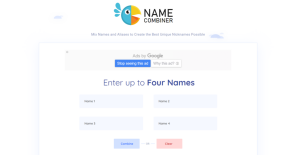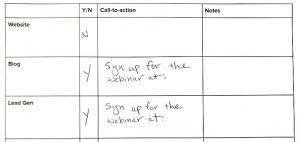
In small business PR, it’s easy to suffer from product or service egomania.
OK… so I made up that diagnosis.
But the point is to succeed as a small B2B business, you need to believe in the greatness of your product or service. It can get to the point that you never stop thinking, dreaming, and babbling about your creation. After all, that unwavering attention is what you need to make it.
Yet, ironically, that maniacal focus can be the kiss of death when it comes to thought leadership.
Why Small Business PR Often Fails at Thought Leadership — And How to Fix It
Thought leadership demands that you step aside from what you’re selling to consider your customers’ challenges. As Forrester analyst Laura Ramos, says, “Business buyers don’t buy your product; they buy into your approach to solving their problems.”
Yet, small business owners are typically so enamored with their product or service that they can’t get outside of it to see where their customers are. Let’s say you add some additional bells and whistles to your product. Yes, it’s amazing, and of course you want to talk it up. But at the same time you want to go beyond that to tie your new features to day-to-day challenges faced by your prospects.
Ramos notes that marketing mindsets are often at odds with thought leadership since they focus primarily on brands, products, and offerings, rather than their prospects’ needs.
Consequently, it’s easy for a small business to put the cart before the horse – selling when someone is still in the sniffing-around stage. The result is that you lose the opportunity to reveal your thought leadership – demonstrating that you know the issues prospects care about.
What is a thought leader?
The phrase “thought leader” implies someone who knows more than the rest of us. Yet the unvarnished truth is that you don’t need to be the smartest person in the room to excel at thought leadership. Instead, you need to know what keeps your customers up at night.
The engine of thought leadership is content. This is not marketing hype that masquerades as thought leadership, but authentic, helpful content. For this to be effective, you can’t just bat out a white paper or eBook, and think you’ve met your content quotient. You need a B2B public relations strategy and process.
Joe Pulizzi, Founder and CEO of Content Marketing Institute, explains this in his excellent book Content Inc.“To be the expert in your industry,” Pulizzi says, “you must first define your customers’ pain points and the niche industry you will cover that will make a difference in your business and in your customers’ lives.”
Pulizzi continues with this insight: “Think of yourself as the trade magazine for your industry.”
Marcus Sheridan, Partner of River Pools and Spas, who rocketed his troubled business to stardom and himself to rock star status both in his space and in the content marketing world, started blogging about every question customers had about fiberglass pools. This seemingly small step meant survival for his business. Why? Because it was geared toward his customer’s pain points, and not his products.
What are your customers’ questions? Answering their questions is a good place to start. It ensures you are addressing their needs. It focuses you on your audience, not your company — exactly what you need to survive. It’s the perfect prescription for business egomania.
5 Practical Ways to Reach Your Thought Leadership Goals
1. Be organized
Before we get into the more action-based methods of growing thought leadership, you need to be organized. This organization boils down to having a team dedicated to the pursuit of thought leadership. This pursuit can be initiated by the CEO of the company, and then handed over to a capable individual to develop it further. This individual will be entrusted to keep the content calendar filled, meet regularly with a team, provide incentives, and regularly track metrics to gauge progress in thought leadership.
This team will identify who the target audience is, as well as pain points, and develop a content strategy to engage that audience. This engagement could be through traditional, digital, and social channels. Then the team can assess the results of its efforts, and improve on its strategy.
You need to have a focused and strategic plan to get your name and your work out into the world. –Peter Winick
2. Leverage Bylines
A strategically placed byline can be key to thought leadership. Choose a hot topic or issue within your industry, use an executive’s byline, and pitch it to an appropriate publication for placement. That may be the basic formula, but as with most things, timing is everything. Plan that byline strategically to get the most out of it.
For example, if your new security system package is due to be released, wait until about a week after its launch to get that piece on 10 Weakest Security Areas for Your Small Business published. This well-timed release will ride the waves of interest generated by your product launch, and will be more successful because of it.
3. Host a Panel
When you host a panel, it puts you in a position to be an acknowledged leader, and own the conversation. Choose a topic for the panel that you’re passionate about, and that demonstrates your depth of knowledge and expertise.
When carefully documented, such an event can live on long after it’s over. Invite the media to cover the event. Then, after the panel is over, create byline articles and white papers centered around the information that was discussed.
4. Be Particular About Speaking Engagements
Once you have established a little influence in your industry, you may be approached to be a speaker at some industry events. But before you uncork the champagne and give the green light to all these requests, pause to consider, and carefully choose which engagements you will accept. Why do we say this?
You don’t want to devalue yourself by taking every speaking engagement that comes your way. Be discerning about which engagements you accept — always looking ahead to gauge how each speaking role will affect your end goal of thought leadership.
5. Write a Book
This may at first seem like a monumental task, but you probably already have the material you need. If you’ve been developing your B2B blog, white papers, and other marketing materials, this content can be molded into a book.
The great part is that in this digital age, self-publishing has never been easier. You no longer have to submit to the whims and fancies of a publisher. For instance, a tool like Beacon makes it a snap to convert your blog posts into a book, and publish it.
Being a published author can be a great boon to your B2B public relations, and lead to other great thought leadership opportunities, B2B leads will also see you as a serious contender in your space.
Some Things to Keep In Mind…
- Thought leadership is about the customer’s needs, not your product or service
- Creation of authentic, helpful content should be a priority
- Organize a team dedicated to boosting thought leadership
- Use bylines, industry panels, and book publishing to fuel your thought leadership
Business & Finance Articles on Business 2 Community
(32)
Report Post







